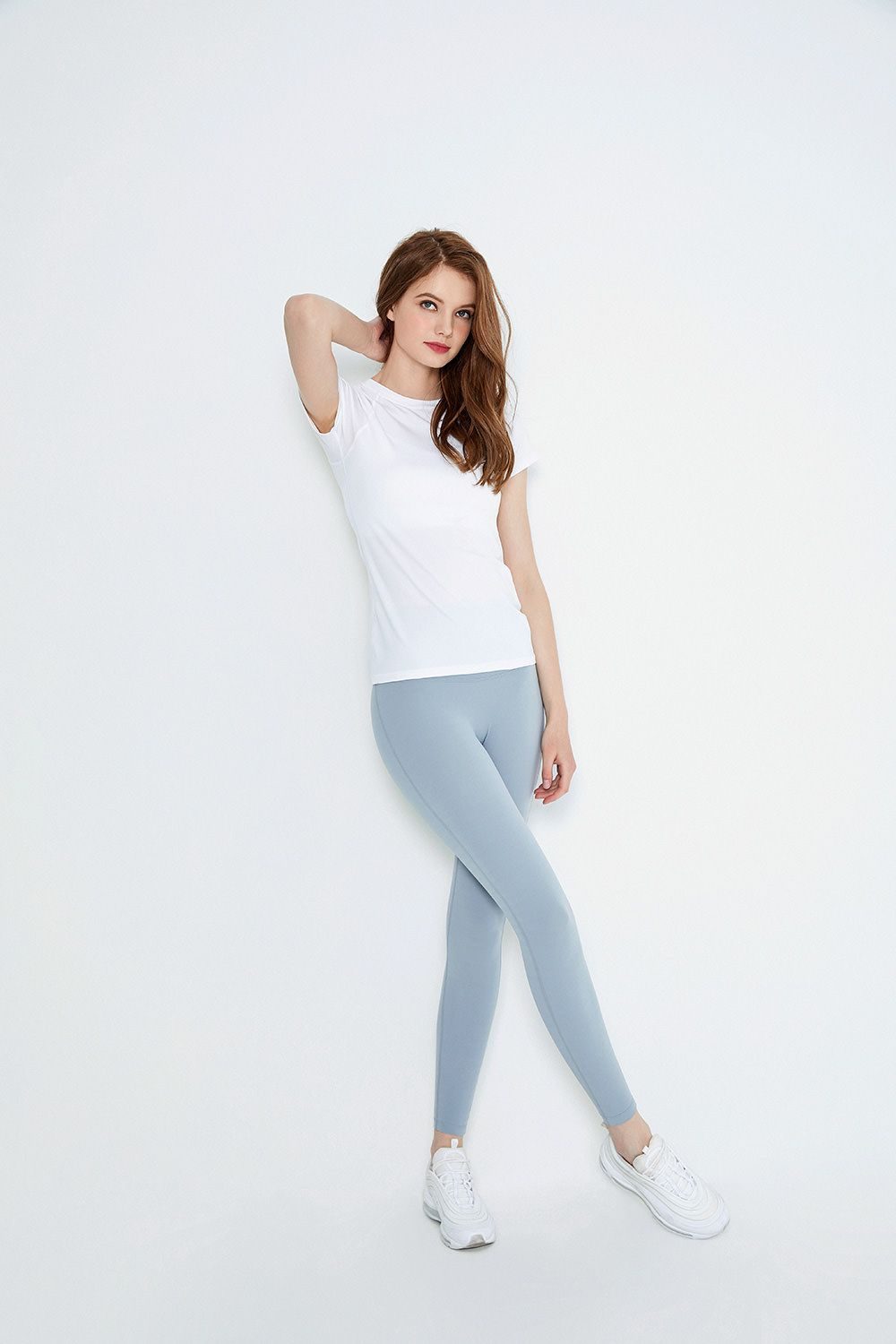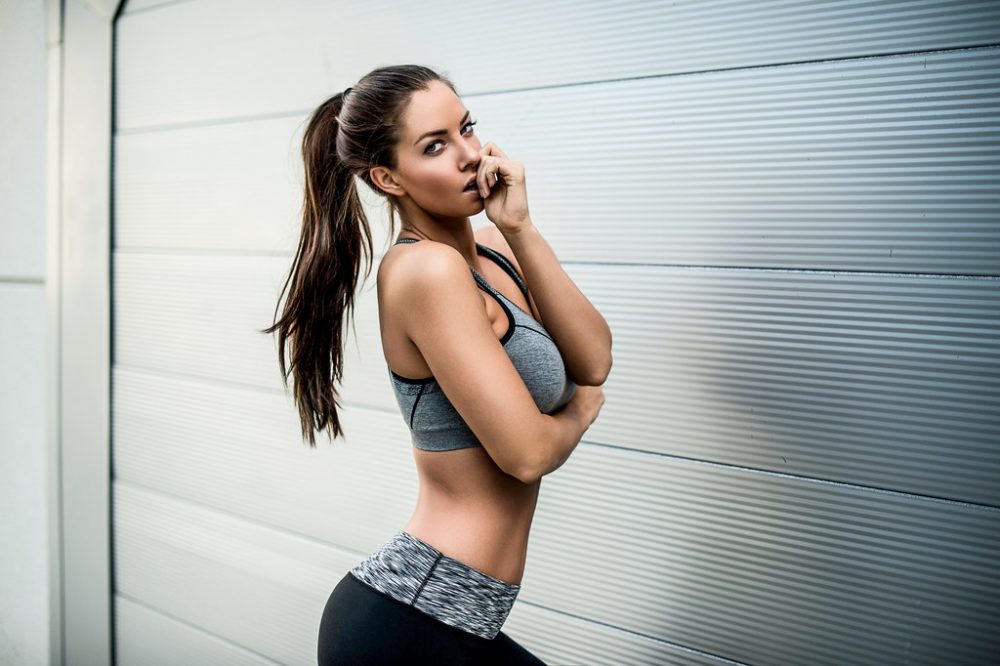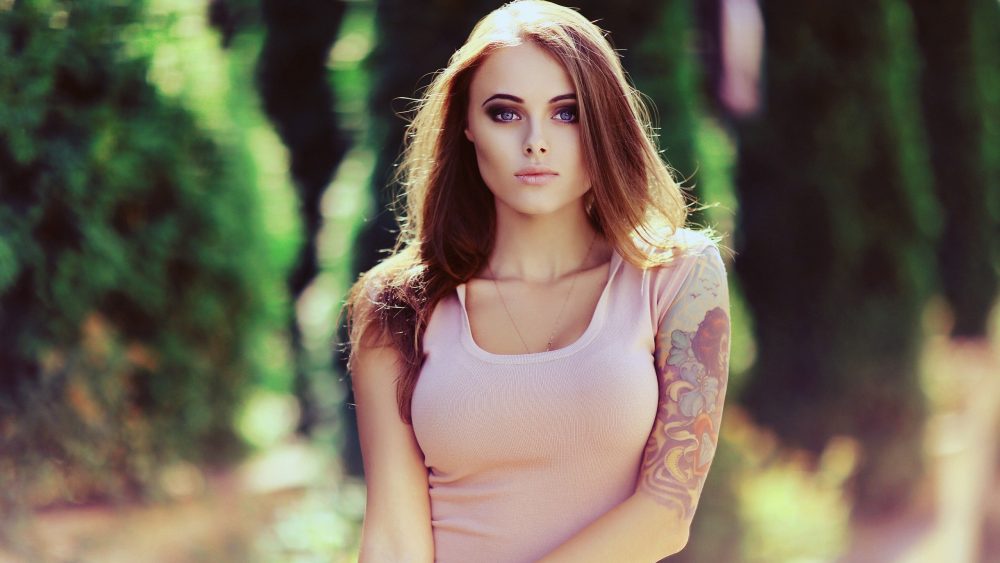
Leg-to-body ratio
A study using Polish participants by Sorokowski found 5% longer legs than an individual used as a reference was considered most attractive. The study concluded this preference might stem from the influence of leggy runway models. The Sorokowski study was criticized for using a picture of the same person with digitally altered leg lengths which Dr. Marco Bertamini felt were unrealistic. Another study using British and American participants, found “mid-ranging” leg-to-body ratios to be most ideal.
A study by Swami et al. of British male and female undergraduates showed a preference for men with legs as long as the rest of their body and women with 40% longer legs than the rest of their body. The researcher concluded that this preference might be influenced by American culture where long legged women are portrayed as more attractive. The Swami et al. study was criticized for using a picture of the same person with digitally altered leg lengths which Marco Bertamini felt were unrealistic. Bertamini also criticized the Swami study for only changing the leg length while keeping the arm length constant. Bertamini’s own study which used stick figures mirrored Swami’s study, however, by finding a preference for leggier women.
According to some studies, most men prefer women with small feet, such as in ancient China where foot binding was practiced.
Hair
Men have been found to prefer long-haired women. An evolutionary psychology explanation for this is that malnutrition and deficiencies in minerals and vitamins causes loss of hair or hair changes. Hair therefore indicates health and nutrition during the last 23 years. Lustrous hair is also often a cross-cultural preference. One study reported non-Asian men to prefer blondes and Asian men to prefer black-haired women.
Movement patterns
The way an individual moves can indicate health and even age and influence attractiveness. In a study that reflected the views of 700 individuals, through a series of 5 studies, 3 of which involved animated representations of people walking. The physical attractiveness perceived increased by about 50 percent when women walked with a hip sway.

Skin tone and skin radiance
A preference for lighter-skinned women has remained prevalent over time, even in cultures without European contact, though exceptions have been found. Anthropologist Peter Frost stated that since higher-ranking men were allowed to marry the perceived more attractive women, who tended to have fair skin, the upper classes of a society generally tended to develop a lighter complexion than the lower classes by sexual selection. In contrast, one study on men of the Bikosso tribe in Cameroon found no preference for attractiveness of females based on lighter skin color, bringing into question the universality of earlier studies that had exclusively focused on skin color preferences among non-African populations.
Today, skin bleaching is not uncommon in parts of the world such as Africa, and a preference for lighter-skinned women generally holds true for African Americans, Latin Americans, and Asians. One exception to this has been in contemporary Western culture, where tanned skin used to be associated with the sun-exposed manual labor of the lower-class, but has generally been considered more attractive and healthier since the mid-20th century.
More recent work has extended skin color research beyond preferences for lightness, arguing that redder (higher a* in the CIELab colour space) and yellower (higher b*) skin has healthier appearance. These preferences have been attributed to higher levels of red oxygenated blood in the skin, which is associated with aerobic fitness and lack of cardiac and respiratory illnesses, and to higher levels of yellow-red antioxidant carotenoids in the skin, indicative of more fruit and vegetables in the diet and, possibly more efficient immune and reproductive systems. Research has additionally shown that skin radiance or glowing skin indicates health, thus skin radiance influences perception of beauty and physical attractiveness.
Eyes
A study where photographs of several women were manipulated (so that their faces would be shown with either the natural eye color of the model or with the other color) showed that, in average, brown-eyed men have no preference regarding eye color, but blue-eyed men prefer women of the same eye color.
A study that investigated whether or not an eyelid crease makes Chinese-descent women more attractive using photo-manipulated photographs of young Chinese-descent women’s eyes found that the “medium upper eyelid crease” was considered most attractive by all three groups of both sexes: white people, Chinese and Taiwanese nationals together as a group and Taiwanese and Chinese Americans together as a group. Similarly, all three groups of both genders found the absence of an eye crease to be least attractive on Chinese women.
Other determinants
There has been research suggesting that women at the “fertile stage” of the menstrual cycle appear more attractive to single unattached men, but it is not clear exactly how this process works. Another study comparing British and American subjects concluded that there is a correlation between intelligence and physical attraction. The study concluded that intelligence is a big factor in physical attractiveness, particularly in males.
Possible gender differences for preferences
For both men and women, there appear to be universal criteria of attractiveness both within and across cultures and ethnic groups. When considering long term relationships, some studies have concluded that men place a higher emphasis on physical attractiveness in a partner than women do. On the other hand, some studies have found little difference between men and women in terms of the weight they place on physical characteristics when they are choosing partners for short-term relationships, in particular with regard to their implicit, as opposed to explicitly articulated, preferences. Other recent studies continue to find sex differences for long-term relationships.
Some evolutionary psychologists, including David Buss, have argued that this long-term relationship difference may be consequence of ancestral humans who selected partners based on secondary sexual characteristics, as well as general indicators of fitness which allowed for greater reproductive success as a result of higher fertility in those partners, although a male’s ability to provide resources for offspring was likely signaled less by physical features.
It is argued that the most prominent indicator of fertility in women is youth, while the traits in a man which enhance reproductive success are proxies for his ability to accrue resources and protect.

Studies have shown that women pay greater attention to physical traits than they do directly to earning capability or potential to commit, including muscularity, fitness and masculinity of features; the latter preference was observed to vary during a woman’s period, with women preferring more masculine features during the late-follicular (fertile) phase of the menstrual cycle. Additionally, women process physical attractiveness differently, paying attention to both individual features and the aesthetic effect of the whole face. A 2003 study in the area concluded that heterosexual women are about equally aroused when viewing men or women. Heterosexual men were only aroused by women. This study verified arousal in the test subjects by connecting them to brain imaging devices. Notably, the same study reported arousal for women upon viewing animals mating.
It has been shown that women prefer men with a more masculine facial dimorphism during the fertile period of the menstrual cycle and men with a more feminine facial dimorphism during other parts of the cycle. This distinction supports the sexy son hypothesis, which posits that it is evolutionarily advantageous for women to select potential fathers who are more genetically attractive, rather than the best caregivers.
Bonnie Adrian’s book, Framing the Bride, discusses the emphasis Taiwanese brides place on physical attractiveness for their wedding photographs. Globalization and western ideals of beauty have spread and have become more prevalent in Asian societies where brides go through hours of hair and makeup to “transform everyday women with their individual characteristics into generic look-alike beauties in three hours’ time.” These brides go through hours of makeup to transform themselves into socially-constructed beauty.
According to strategic pluralism theory, men may have correspondingly evolved to pursue reproductive strategies that are contingent on their own physical attractiveness. More physically attractive men accrue reproductive benefits from spending more time seeking multiple mating partners and relatively less time investing in offspring. In contrast, the reproductive effort of physically less attractive men, who therefore will not have the same mating opportunities, is better allocated either to investing heavily in accruing resources, or investing in their mates and offspring and spending relatively less time seeking additional mates.
Disclaimer
The Content is not intended to be a substitute for professional medical advice, diagnosis, or treatment. Always seek the advice of your physician or other qualified health provider with any questions you may have regarding a medical condition.